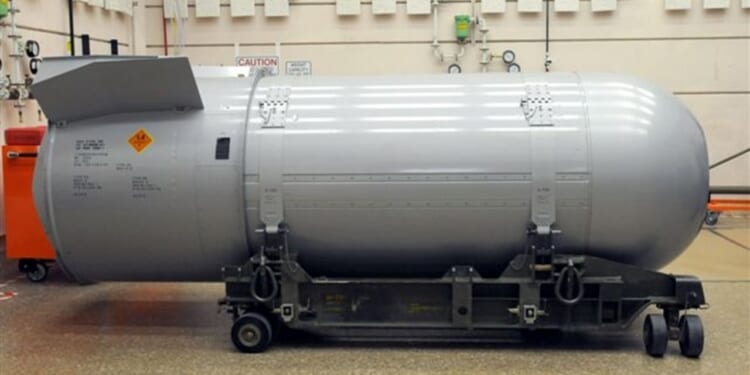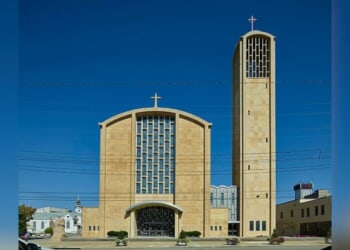The simple truth is that the United States and its rivals have nuclear arsenals sufficient to end life on Earth many dozens of times over.
The United States’ nuclear arsenal is not based on a single weapon, but a family of warheads and delivery systems tailored for different missions. Depending on the needs of the moment, the United States can deliver strategic deterrence, flexible response, and limited tactical options. Broadly speaking, US warheads fall into three technical categories: pure fission weapons; boosted fission weapons; and staged thermonuclear (two-stage) weapons. Yields vary from sub-kiloton options used for limited tactical effects up through weapons with end-of-day yields measuring in the tens or hundreds of kilotons. Most deployed warheads today are in the low-hundreds-of-kilotons range, with variable yield options maintained for flexibility. For reference, the “Little Boy” and “Fat Man” nuclear weapons used on Hiroshima and Nagasaki at the end of World War II were approximately 15 to 20 kilotons.
How America’s Nuclear Triad Works
The three different types of warheads in the US nuclear arsenal work in different ways:
- A simple fission warhead releases energy by splitting heavy uranium or plutonium nuclei in a rapid chain reaction. Modern fission warheads use essentially the same implosion-type design as the Fat Man bomb used on Nagasaki. (The Little Boy bomb used a “cannon-type” design, which is far simpler but requires much more uranium; this design is now obsolete.)
- “Boosted fission” weapons insert a small amount of fissionable gas—usually tritium or deuterium—into the core to multiply neutron production during the brief fission pulse, increasing the weapon’s yield efficiency without changing its overall architecture.
- “Staged thermonuclear weapons” use a fission primary to generate x-ray energy that compresses and ignites a separate secondary fusion stage. Sometimes known as “hydrogen bombs,” these are the largest and most destructive weapons ever built.
These three different warheads are in turn fielded on three legs of the “nuclear triad,” an arrangement that maximizes strategic flexibility. The nuclear triad consists of:
- Land-based intercontinental ballistic missiles (ICBMs). These carry single or multiple warheads on fixed silos for a rapid ground-based response.
- Submarine-launched ballistic missiles (SLBMs). These provide stealthy survivable deterrence. In the event of a catastrophic nuclear attack on the United States, submarines based around the world could retaliate against the attacker, making it impossible to wipe out America’s nuclear arsenal in a first strike. Modern SLBMs like the Trident can carry multiple independently targetable reentry vehicles (MIRVs) so one missile can host several warheads.
- Long-range bomber aircraft like the B-52, B-2, and upcoming B-21. These planes can deliver gravity bombs or air-launched cruise missiles, including variable-yield B61 family bombs that can be set for low to moderate yields as part of an escalation-management strategy.
The US also possesses non-strategic (tactical) nuclear options intended for battlefield or regional use, typically with lower yields and different employment concepts.
How America Plans for a Nuclear War
Strategically, the diverse mix of warhead types and delivery modes shapes deterrence and risk calculations in several ways—giving war planners a wide range of options in the unthinkable event of a nuclear conflict with another great power.
ICBMs are typically considered the best first-strike option because they themselves can be targeted in an adversary’s first strike. Sea-launched missiles have survivability, as mentioned above, and are also typically far more difficult to detect and counteract. Bombers add signaling and flexibility to the triad—capable of being dispatched or recalled, complicating an adversary’s crisis calculus. And variable-yield and tactical nukes widen options further, giving the US an option short of all-out retaliation, albeit an option that lowers the threshold for the deployment of a nuclear weapon in combat.
Of course, even so-called “low-yield” detonations produce catastrophic humanitarian and environmental effects and can quickly lead to escalation. The simple truth is that the United States and its rivals have nuclear arsenals sufficient to end life on Earth many dozens of times over. The responsibility of stewardship over such an arsenal is immense. And while the US possesses such a formidable arsenal, adversaries will be incentivized to keep pace, fielding diverse nuclear arsenals of their own.
About the Author: Harrison Kass
Harrison Kass is a senior defense and national security writer at The National Interest. Kass is an attorney and former political candidate who joined the US Air Force as a pilot trainee before being medically discharged. He focuses on military strategy, aerospace, and global security affairs. He holds a JD from the University of Oregon and a master’s in Global Journalism and International Relations from NYU.
Image: Wikimedia Commons.


















